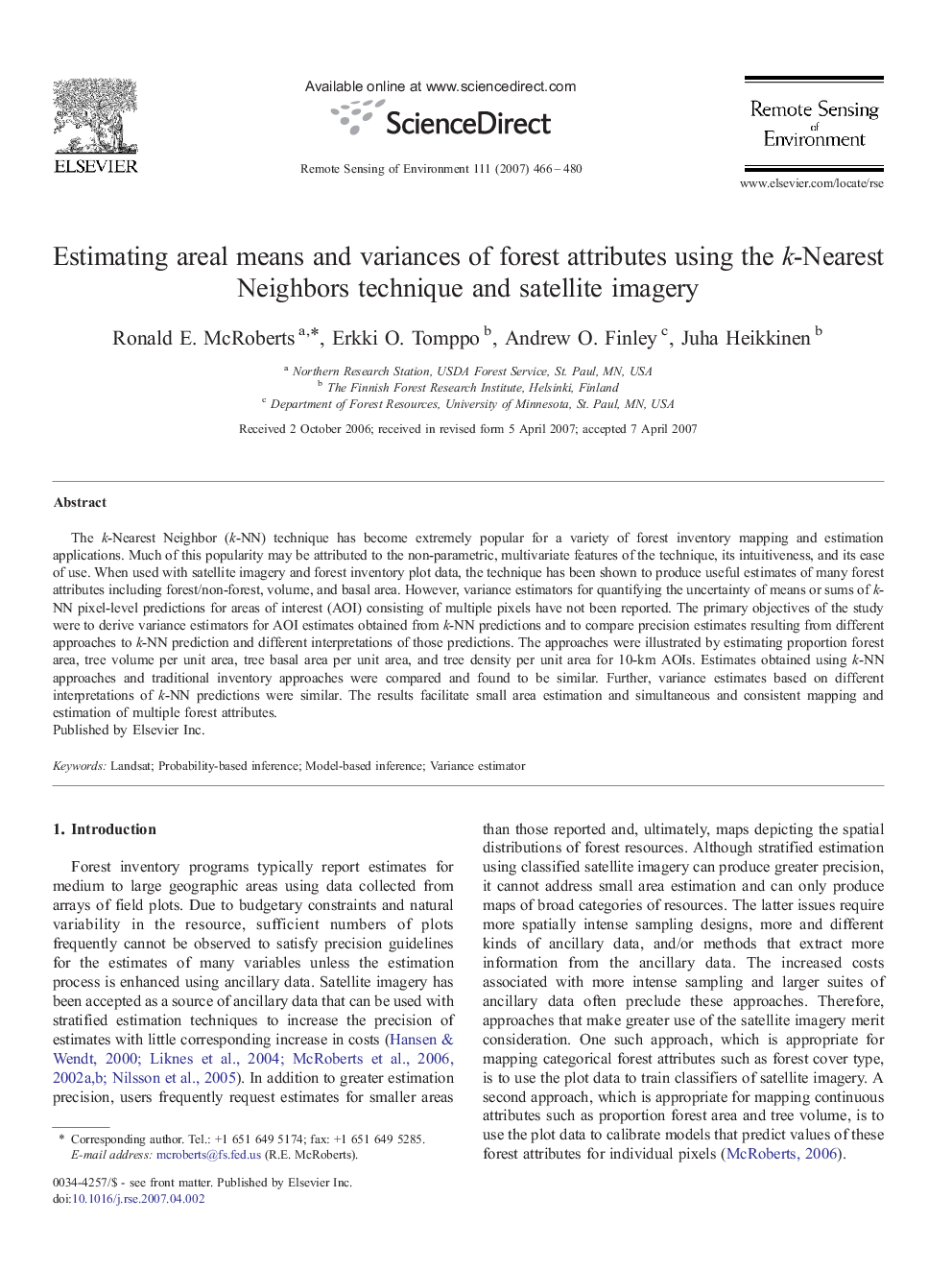| Article ID | Journal | Published Year | Pages | File Type |
|---|---|---|---|---|
| 4460656 | Remote Sensing of Environment | 2007 | 15 Pages |
The k-Nearest Neighbor (k-NN) technique has become extremely popular for a variety of forest inventory mapping and estimation applications. Much of this popularity may be attributed to the non-parametric, multivariate features of the technique, its intuitiveness, and its ease of use. When used with satellite imagery and forest inventory plot data, the technique has been shown to produce useful estimates of many forest attributes including forest/non-forest, volume, and basal area. However, variance estimators for quantifying the uncertainty of means or sums of k-NN pixel-level predictions for areas of interest (AOI) consisting of multiple pixels have not been reported. The primary objectives of the study were to derive variance estimators for AOI estimates obtained from k-NN predictions and to compare precision estimates resulting from different approaches to k-NN prediction and different interpretations of those predictions. The approaches were illustrated by estimating proportion forest area, tree volume per unit area, tree basal area per unit area, and tree density per unit area for 10-km AOIs. Estimates obtained using k-NN approaches and traditional inventory approaches were compared and found to be similar. Further, variance estimates based on different interpretations of k-NN predictions were similar. The results facilitate small area estimation and simultaneous and consistent mapping and estimation of multiple forest attributes.
